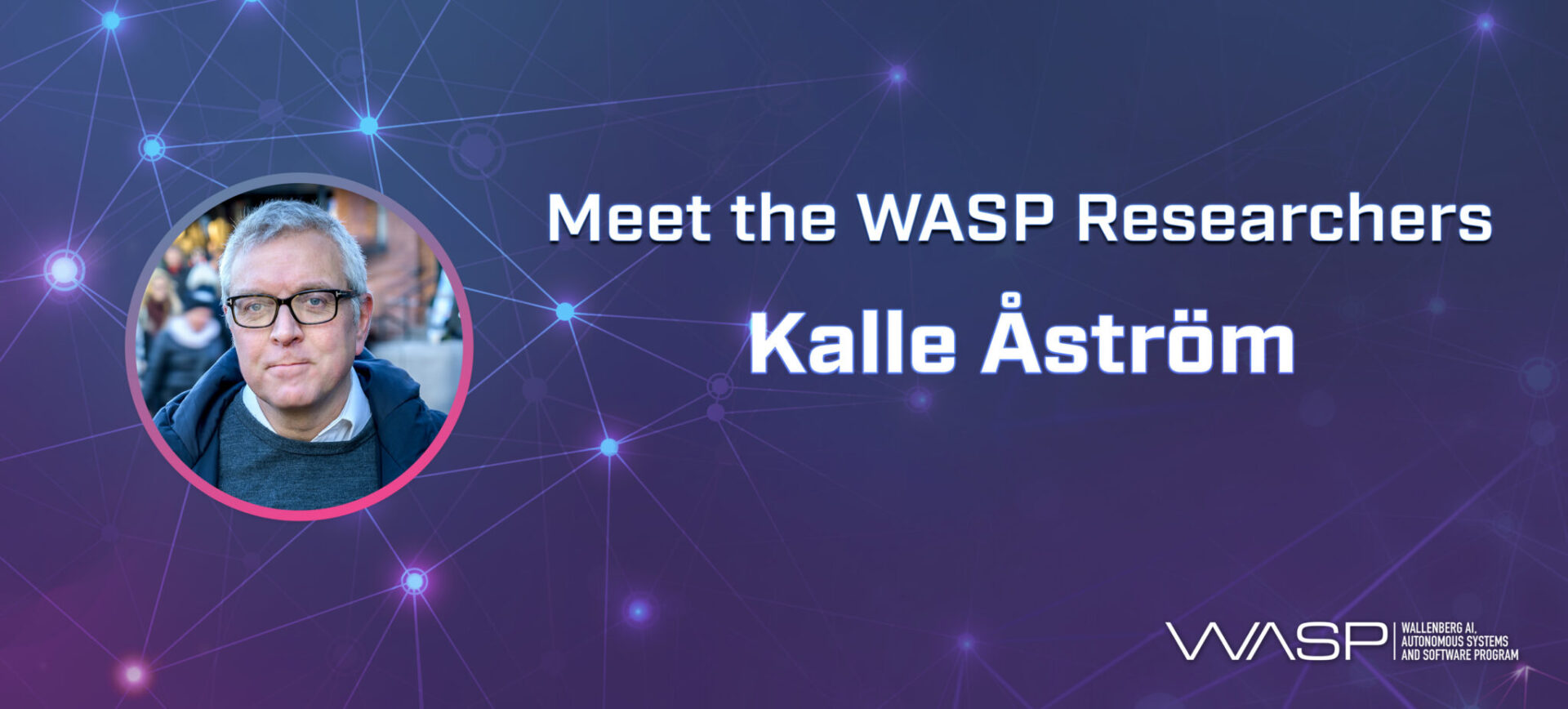WASP is very proud to have so many excellent researchers involved in the program. More than 450 researchers, reaching from assistant to senior professors, are affiliated with WASP. Some are international recruitments who have come to Sweden to join the WASP community, others are already well established in the Swedish academic system.
Through a series of portraits, you get the opportunity to get to know them a little bit better.
Meet Kalle Åström
Kalle Åström is a Professor at the Centre for Mathematical Sciences at Lund University. Professor Åström joined WASP in 2015.
What is your position/role in WASP?
Cluster leader for the WASP cluster Perception and Learning. Supervisor of academic and industrial WASP PhD students.
Why did you choose to join WASP?
WASP is a fantastic project both in terms of funding and in terms of enabling excellent research and increased cooperation within both academic groups and industry.
What are the benefits you see in WASP?
The WASP project has been instrumental for increased cooperation within Swedish academic groups, and with Swedish industry. The strategy to work both with strategic recruitment to academia and with research project funding has been successful. I also enjoy the high standard of the WASP project and its focus on excellence.
Briefly describe your research topic.
I am interested in research on computer vision and machine learning. We do basic research on geometry and machine learning, but we are also interested to see how these methods can be used in other research areas, in industry and in public sector. We have put some effort into developing tools for solving systems of polynomial equations using algebraic geometry, for example
- Larsson, V., Åström, K., & Oskarsson, M. (2017). Efficient solvers for minimal problems by syzygy-based reduction. In Proceedings of the IEEE Conference on Computer Vision and Pattern Recognition (pp. 820-829).
- Larsson, V., Åström, K., & Oskarsson, M. (2017). Polynomial solvers for saturated ideals. In Proceedings of the IEEE International Conference on Computer Vision (pp. 2288-2297).
These tools are then used to solve robust estimation problems concerning vision, sound or radio (see for example: Larsson, Flood, Oskarsson & Åström (2021). Fast and robust stratified self-calibration using time-difference-of-arrival measurements. In ICASSP 2021-2021 IEEE International Conference on Acoustics, Speech and Signal Processing (ICASSP) (pp. 4640-4644)).
We also study applications of computer vision and machine learning (see for example: Broms, Nilsson, Oxenstierna, Sopasakis & Åström (2023). Combined analysis of satellite and ground data for winter wheat yield forecasting. Smart Agricultural Technology, 3, 100107).
In what way can your research be of importance to our society in the future?
Research on computer vision and machine learning is being used in projects related to forestry and agriculture. This has the potential to increase carbon sequestration, understand biodiversity and has economic impact. Research on image analysis and machine learning are important for the future health care system. Research on computer vision and positioning is an enabler for autonomous vehicles and drones.
For more information about Professor Åström, see https://www.maths.lu.se/staff/kalleastrom/
Published: May 30th, 2023
[addtoany]


